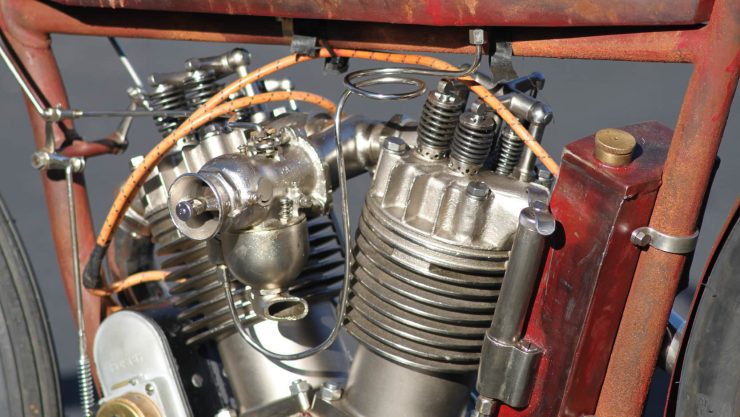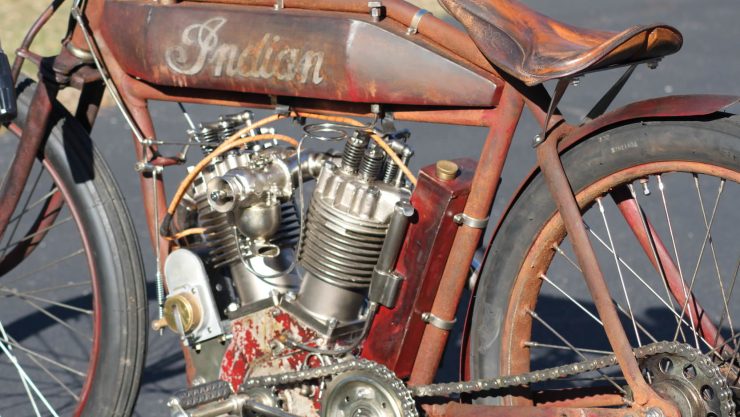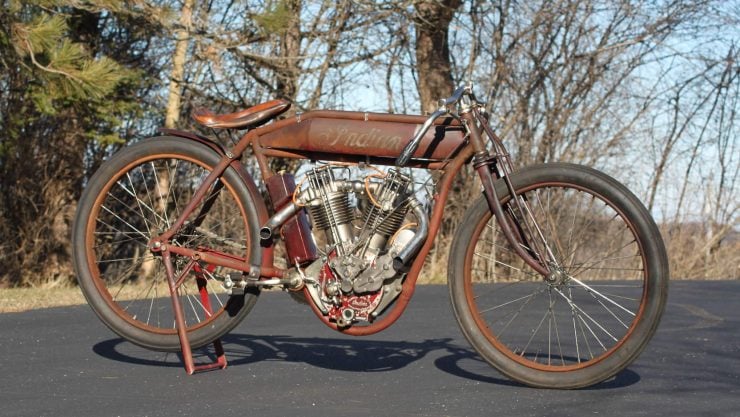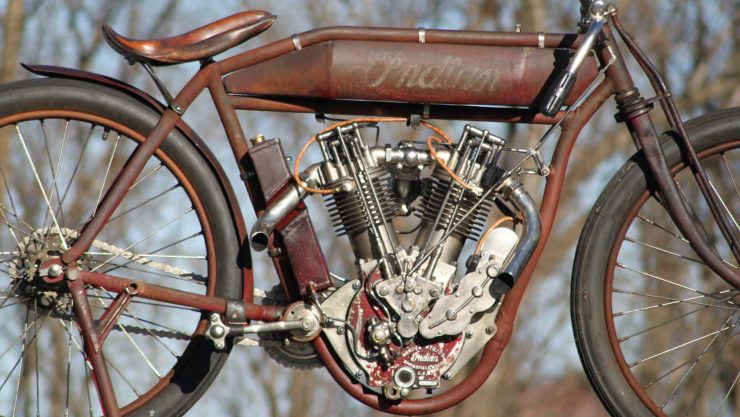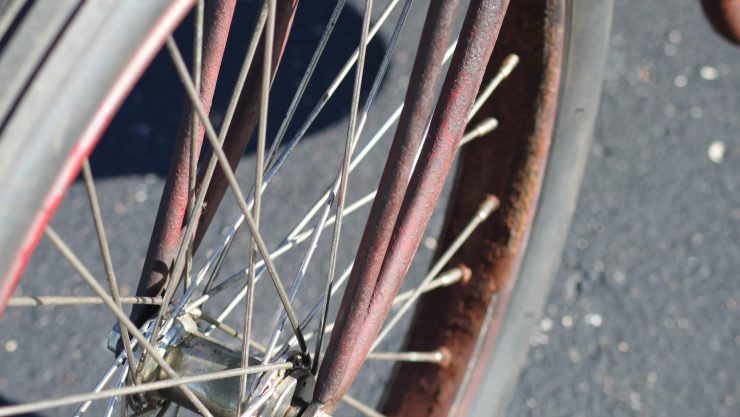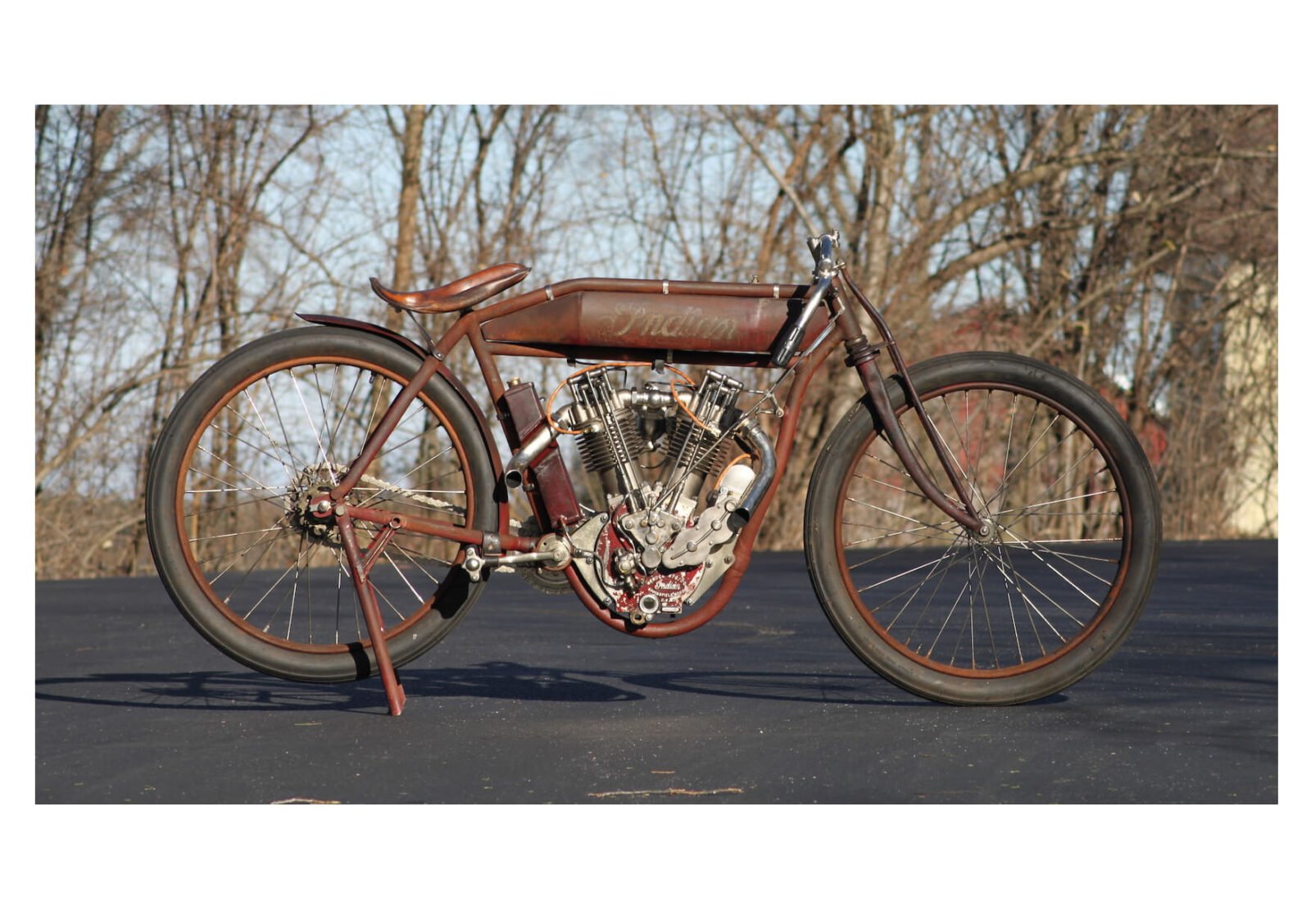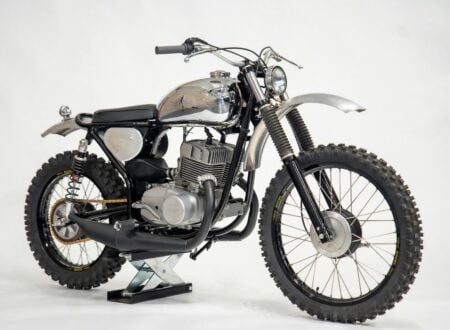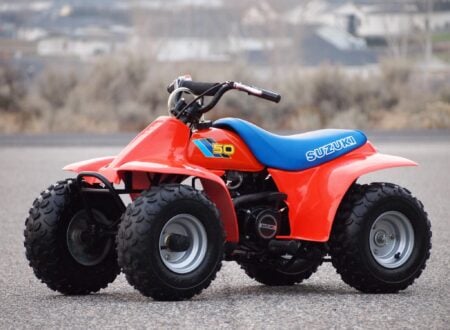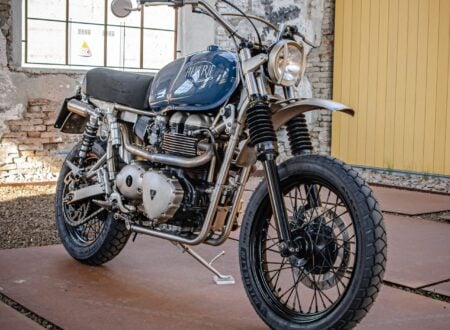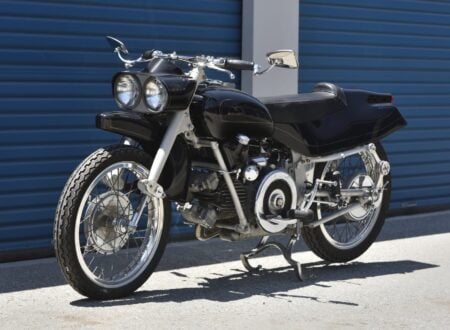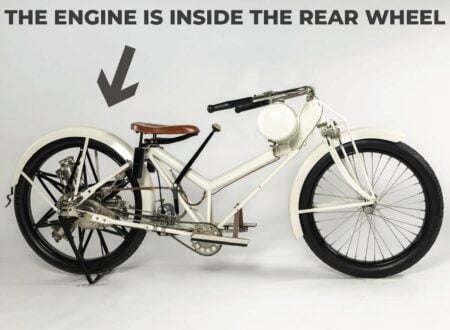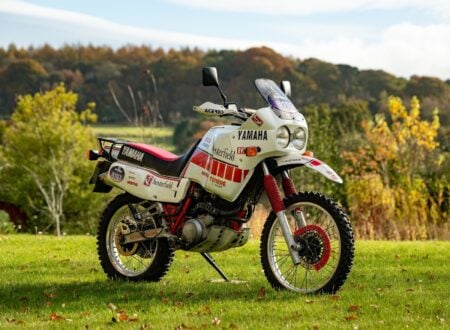Project bikes don’t get much more interesting than this, although some may not consider it a project at all, preferring to keep it exactly as it is with its hard-earned patina in place.
Despite the fact that over 102 years have passed since this Indian was manufactured, it still retains its original frame, engine, and forks – a rare trifecta that’ll be sure to attract collectors.
The major non-original parts being used are aftermarket 8 valve heads – each head has 4 valves (8 combined) with exposed rocker arms and springs, as opposed to the more common 2 valve heads.
Although the listing isn’t specific, the engine looks to be in perfect running order (or very close to it). With short open pipes it’ll be fantastically loud, and as with all board track motorcycles you’ll need either a push start to get the motor running, or you’ll need to pedal like crazy until you get up enough speed for a bump start.
If you’d like to read more about this bike or register to bid you can click here to visit the listing on Mecum.
Indian Motorcycle
Back in the early part of the 20th century, Indian Motocycle were one of the most successful and prolific builders of both racing and road motorcycles in the world.
Most people don’t typically associate Indian with racing, but the Indian factory team took the first three places in the 1911 Isle of Man Tourist Trophy competing against the best in the world.
Indians were also a dominant force on the board tracks, dirt tracks, and hill climbs of the USA – and you’ll still find Indians from the era being used daily on Wall of Death attractions in carnival sideshows.
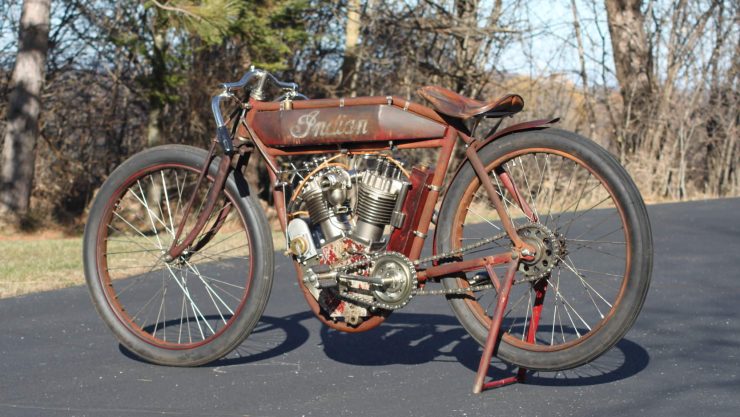
This 1915 Indian Twin Board Track Racer
The board track racer you see here is a great example of the kind of motorcycle that propelled brave young riders to speeds in excess of 100 mph around the banked wooden motordromes that dominated the racing landscape of the 1910s and 1920s.
As with almost all board track motorcycles, this one has no brakes, no suspension, a rudimentary single tube frame, a thinly padded seat, a fuel tank fitted between the upper frame members, low swept handlebars, and pedals to help with engine starting.
For protection, riders would typically wear a leather helmet, goggles, some moustache wax, and a nice woolen sweater.
This Indian is powered by the company’s famous 61 cubic inch V-twin (~1000 cc), with an intake-over-exhaust head (an F-head), a centrally mounted carburetor, and a front mounted magneto.
Mechanical inlet valves had been introduced for the 1908 model year, significantly improving performance and reliability, a year later in 1909 a new frame would be implemented that no longer used the rear cylinder as a load-bearing member.
Indian didn’t start building race-specific bikes for public sale until 1908, the same year that company founders Hedstrom and Hendee opened their own hometown pine board motordrome in their hometown. It was designed as a private Indian test track that could double as a race track on weekends, and Indian works rider Jake DeRosier completed countless laps as various engine and frame modifications were trialed.
Indian board trackers would win countless races across the USA during the golden era, and their distinctive look is still considered by many to be amongst the most beautiful motorcycle designs of all time.
